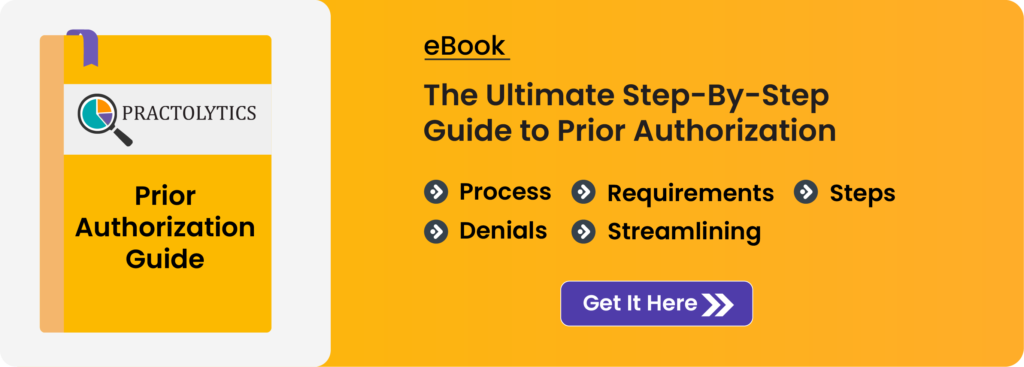Cut Time on Prior Authorization Smart Provider Steps
Cut Time on Prior Authorization Smart Provider Steps explores one of healthcare’s biggest ongoing challenges. While patients wait for tests, treatments, or medications, providers and staff spend hours chasing approvals. In 2025, stricter regulations and longer approval lists make the process even more complex. This blog uncovers the causes behind these delays, their impact on care and revenue, and how technology—like automation, artificial intelligence, and digital tools—is changing the landscape. Discover practical, proven steps providers can take to speed up prior authorizations and deliver better patient care.
Table of Contents
How Can Providers Reduce the Time Spent on Prior Authorization?
In 2025, prior approval remains a significant issue in the healthcare industry. Before giving patients treatments, tests, or medications, doctors must get the insurance verification company’s approval. Even though cost control is the aim of this step, it usually leads to paperwork, delays, and lost income.
Doctors have to spend hours answering phones and completing paperwork rather than seeing patients. In urgent care, patients have to wait days or weeks.
Here’s the problem, then: How can providers expedite prior approval without running the risk of denials or delays? Let’s figure this out.
What Is Prior Authorization?
Insurance companies use prior authorization to determine whether to pay for a medical service before it is actually rendered.
This is how it operates:
- Doctors send patient details and treatment plans.
- Insurers review if it’s covered and medically needed.
- If approved, care happens. If denied, patients face delays or appeals.
This is how insurers control expenses. It frequently feels like a barrier to prompt care for both patients and physicians.
Why It Takes So Long to Get Prior Authorization
Let’s identify the causes of delays to minimize them.
Problem 1: Changing Rules
- Every payer has different requirements.
- Rules update frequently with little warning.
- What worked last month may need new paperwork today.
Result: Teams waste hours tracking updates
Problem 2: Manual Work
- A lot of clinics use email, fax, or phone calls.
- Paper forms are prone to errors.
- Errors or missing forms result in denials.
Fact: Authorizations are handled manually by 85% of providers.
Problem 3: Staff Workload
- Staff already manage appointments, billing, and patient needs daily.
- Chasing insurance approvals steals time from direct patient care.
Problem 4: Long Approval Times
- Urgent requests can take days to clear.
- Routine requests often take 10–14 days.
- Every delay holds up patient treatment.
Problem 5: Growing List of Services Needing Approval
- Commoner treatments, such as imaging, specialty drugs, and even basic therapies, now require approval.
- Stricter regulations will apply to expensive medications and sophisticated scans, such as MRIs, starting in 2025.
The Impact of Delays
- Longer wait times for care can make serious illnesses like cancer or heart issues worse.
- When insurers, not doctors, decide on a patient’s course of treatment, the patient becomes irate.
- Rejected claims and cancelled appointments cost providers money.
- Increased employee burnout: Too much paperwork lowers morale and makes workers want to quit.
Key Stat (2024 AMA Survey):
- 94% of doctors saw care delays due to prior authorization.
- 33% reported these delays caused serious harm to patients.
Trends and Updates in 2025
Healthcare is changing to tackle delays in prior authorizations:
CMS Drives Digital Adoption
Medicare Advantage, Medicaid, and the majority of private insurers are required to implement electronic prior authorization systems by 2026.
In 2025, a lot of people will already be switching.
AI Simplifies Approvals
New AI tools forecast approval odds and flag missing documents upfront.
This cuts errors and denials.
“Gold Carding” Rewards Trusted Providers
Doctors with strong approval histories skip prior authorization services for certain procedures.
Saves time and strengthens payer-provider relationships.
Patients Demand Clear Answers
People want simple answers: “Is this covered? How long?”
Clinics offering transparency boost patient loyalty.
How Providers Can Reduce Time Spent on Prior Authorization
1. Automate with EHR Software
- Connect your EHR to smart tools that handle paperwork. Forms fill faster, errors get caught early, and you save hours.
- When payer rules change, you know instantly.
- Outcome: Fewer denials, quicker approvals.
2. Simplify Team Workflows
- Give staff clear checklists for every step. Use ready-made templates for common tasks. Track everything in one place.
- Benefit: Fewer mix-ups, smoother operations.
3. Train Your Team Often
- Small mistakes in forms lead to big hold-ups.
- Hold quick monthly sessions to keep your team updated on payer changes. This helps them handle approvals smoothly, without asking for help every time.
- Why it works: Teams trained monthly cut denials by 25–30%.
4. Track Your Progress
- How long do approvals take?
- Spot which payers or services slow you down the most. Use this info to fix repeat issues or talk better deals with payers.
- Key result: Clinics tracking denials speed up approvals by 40%.
5. Communicate Clearly with Patients
- Explain authorization steps early.
- Set clear timelines and costs.
- Update patients during waits to reduce worry.
- Benefit: Patients trust you more, even with delay
6. Work with Experts
- Team up with authorization specialists.
- Outsource tricky cases to free your staff.
- Result: Faster approvals and less team stress.
Real-World Example: A Clinic’s Success Story
In 2024, a California orthopedic clinic faced a major problem: insurance approvals.
40% of their MRI requests got rejected right away.
Getting approvals took up to 3 weeks.
Patients kept leaving for faster options.
Their fix:
- Added automated approval software
- Trained staff monthly on insurance rule changes
- Created a patient portal for real-time updates
Six months later:
- Denials cut in half
- Approval time dropped from 21 days to 7.
- Patient happiness jumped 30%.
The turnaround: Faster care, fewer headaches, loyal patients.
Lessons Learned
- Manual labor slows you down. Automation speeds things up and keeps you competitive.
- Small mistakes hurt your business. Training your team prevents costly errors.
- Patients trust honesty. Be clear about wait times and costs to build loyalty.
- Track your data. It shows where to fix bottlenecks and boost efficiency.
Conclusion: Cut Prior Authorization Time with Practolytics
Prior authorization shouldn’t slow you down or increase your costs. With the correct tools and support, you can avoid delays, protect your income, and give patients better care.
Practolytics helps your team by:
- Automating prior authorizations right in your EHR system.
- Cutting denials with error-free submissions.
- Tracking every request in one clear dashboard.
- Alerting you instantly when payer rules change.
- Freeing staff from paperwork to focus on patients.
What you get:
- Quicker approvals
- Better patient care
- Happier staff
- Steady cash flow
In 2025, manual prior authorizations waste time. Practolytics helps you move faster, reduce denials, and keep patient trust.
Read More – Prior Authorization Services for Podiatry : improving Patient Access and Care
Talk to Medical Billing Expert Today — Get a Free Demo Now!






